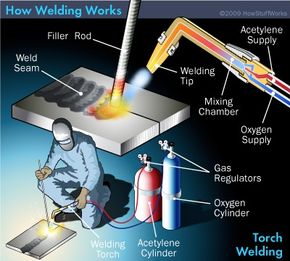Why a Welding WPS is Crucial: Enhancing Consistency and Compliance
Why a Welding WPS is Crucial: Enhancing Consistency and Compliance
Blog Article
Getting Welding Quality: Introducing the Keys of WPS Application and Optimization
In the realm of welding, accomplishing excellence is a search that hinges on the careful application and optimization of Welding Treatment Specifications (WPS) By diving into the key aspects, strategies, obstacles, and best techniques connected with WPS, a globe of welding quality waits for those who are ready to explore its midsts.
Significance of WPS in Welding
The Importance of Welding Treatment Specifications (WPS) in the welding sector can not be overstated, functioning as the foundation for making sure uniformity, high quality, and safety in welding procedures. A WPS offers thorough instructions on exactly how welding is to be lugged out, including crucial variables such as materials, welding procedures, joint layout, filler metals, interpass and preheat temperatures, welding currents, voltages, traveling rates, and much more. By sticking to a well-defined WPS, welders can preserve harmony in their work, bring about constant weld top quality throughout various tasks.

Trick Elements of WPS
Talking about the essential components of a welding procedure requirements (WPS) is essential for understanding its role in welding procedures. One important element of a WPS is the welding procedure spec, which outlines the specific welding processes to be made use of, such as gas tungsten arc welding (GTAW) or protected steel arc welding (SMAW) By incorporating these key elements right into the WPS, welding treatments can be standardized, ensuring top quality, performance, and security in welding operations.
Strategies for WPS Optimization

Secondly, training and credentials of welding employees according to the certain demands of the WPS is paramount. Giving detailed training programs and guaranteeing that welders are certified to implement procedures outlined in the WPS can bring about higher quality welds and lowered rework.
Furthermore, leveraging technology such as welding software program and tracking systems can assist in enhancing WPS. These tools can help in tracking variables, making sure parameters are within defined limitations, and providing real-time comments to welders, allowing them to make instant adjustments for boosted weld quality.
Usual Challenges and Solutions
Encountering obstacles in carrying out the approaches for WPS optimization can hinder welding operations' effectiveness and high quality. One usual obstacle is inadequate training or understanding of the welding procedure specs (WPS) amongst the welding group.
An additional obstacle is go to this web-site the lack of appropriate documents and record-keeping, which is essential for WPS optimization. Without clear records of welding parameters, materials utilized, and assessment outcomes, it ends up being difficult to determine locations for renovation and make certain uniformity in welding procedures. Applying a durable documents system, such as electronic welding administration software application, can assist enhance record-keeping and assist in information analysis for constant enhancement.
Additionally, inconsistent welding equipment calibration and maintenance can pose a substantial obstacle to WPS optimization. Normal devices checks, calibration, and maintenance schedules should be stuck to purely to make sure that welding specifications are precisely controlled and kept within the defined tolerances (welding WPS). By dealing with these common obstacles with aggressive options, welding operations can enhance performance, high quality, and overall welding quality
Ideal Practices for WPS Application
To ensure effective WPS implementation in welding procedures, adherence to market criteria and meticulous focus to information are vital. When initiating WPS execution, it is critical to begin by completely understanding the details welding demands of the task. This Our site involves a why not check here thorough evaluation of the welding treatment specifications, products to be bonded, and the environmental problems in which the welding will certainly happen.
Once the demands are clear, the next action is to pick the suitable welding treatment that aligns with these specs. This entails seeking advice from the pertinent codes and standards, such as those supplied by the American Welding Culture (AWS) or the International Organization for Standardization (ISO), to guarantee conformity and top quality.
Additionally, recording the whole WPS execution process is vital for traceability and top quality control. Detailed records must be maintained pertaining to welding parameters, product prep work, interpass and preheat temperatures, welding consumables used, and any type of variances from the original procedure. Routine audits and evaluations of the WPS can assist determine locations for renovation and make certain recurring optimization of the welding procedure.


Conclusion
Finally, the implementation and optimization of Welding Procedure Requirements (WPS) is essential for attaining welding excellence. By comprehending the key aspects of WPS, applying effective techniques for optimization, resolving common difficulties, and complying with ideal practices, welders can guarantee high-grade welds and safe working conditions. It is critical for professionals in the welding market to focus on the correct execution of WPS to enhance overall welding performance and accomplish preferred end results.
The Relevance of Welding Procedure Specifications (WPS) in the welding industry can not be overstated, serving as the backbone for making sure uniformity, high quality, and safety and security in welding procedures. A WPS gives detailed instructions on how welding is to be carried out, including important variables such as materials, welding processes, joint design, filler metals, interpass and preheat temperatures, welding currents, voltages, travel speeds, and more. One essential aspect of a WPS is the welding process specification, which details the certain welding processes to be used, such as gas tungsten arc welding (GTAW) or shielded metal arc welding (SMAW) By including these vital elements into the WPS, welding treatments can be standard, making sure high quality, efficiency, and safety in welding procedures.
It is imperative for professionals in the welding industry to focus on the appropriate implementation of WPS to enhance total welding efficiency and attain desired results.
Report this page